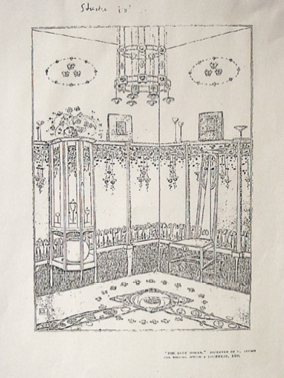Product Description
George Logan / Glasgow Style / British Arts & Crafts “The Grey Bower” chair c. 1905


George Logan (1866–1939) Glasgow, Scotland
Wylie & Lochhead, Ltd. Glasgow
British Arts & Crafts Movement/Glasgow Style
“The Grey Bower” chair, circa 1905.
Stained beech and contemporary silk upholstery.
Illustrated in a published drawing “The Grey Bower” by George Logan for Mssrs. Wylie & Lochhead in an article entitled ” A Color Symphony”: The Studio Magazine 1905
H: 53 3/8” x W: 18” x D: 13 3/4”
The Glasgow School was a circle of influential modern artists and designers who began to coalesce in Glasgow, Scotland in the 1870s, and flourished from the 1890s to sometime around 1910. Wylie and Lochhead’s output in the Glasgow Style, which was showcased at the 1901 Glasgow International Exhibition was designed by three young craftsmen – Ernest Archibald Taylor (1874–1951), John Ednie (1876–1934) and George Logan (1866–1939).
George Logan / Glasgow Style / British Arts & Crafts “The Grey Bower” chair c. 1905
You must be logged in to post a comment.

Reviews
There are no reviews yet, would you like to submit yours?